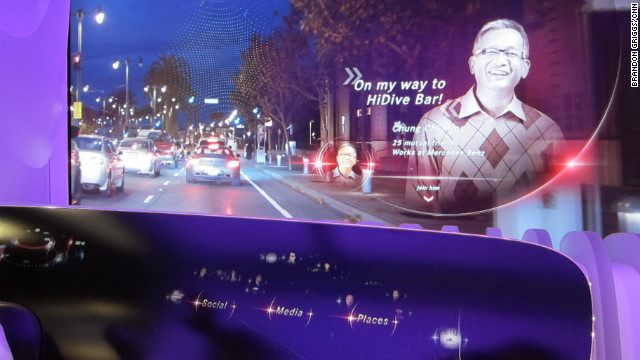I've recently co-founded with Ignacio Mondine a new company, Two Way View. Two Way View will develop, manufacture and sell new products that enable "Transparent Collaboration."
Transparent Collaboration is what people do when they use Two Way View products to share, annotate and modify data, co-surf or otherwise have an experience that combines the digital and physical worlds. You might think that I’m talking about Augmented Reality, and there are related concepts, but Transparent Collaboration products don’t overlay digital data on the physical world. They allow me to use the physical world, directly, by way of a light pen or my fingertips on the touch-sensitive screen, to modify the digital world in real time.
The crucial difference and where we are disruptive, as you can see in this video, is how Two Way View products also allow the two people who are sharing and collaborating to see one another in real size, see where the other is looking, and to work together only an arm's length away, just as if they were on opposite sides of the same sheet of glass.
It's the fusion of a digital white board and telepresence system.
No one has proven that people will change their behaviors to use it, but I'm really excited about the highly disruptive technology this company is bringing to market. We might be in the position described by Clayton Christensen in his now classic book, the Innovator's Dilemna. The giant companies that currently provide telepresence–Cisco and Polycom–are feeling the slow down in sales but, more importantly, they may have neglected to continue innovating within their markets; an upstart with a different approach and higher value comes in.
What lessons can we use from Christensen's masterpiece? I found this short essay on TechCrunch and it helped me to formulate Two Way View's answers with respect to Christensen's four key takeaways:
- Understand what is the source of your disruption. Is it a new product or a new way to distribute an existing product? Two Way View will use, to the best of its ability, the existing IT and telecommunication products distribution channels to introduce at least one new product.
- Pay attention to opportunities in new distribution channels. Two Way View could also distribute its products outside the traditional telepresence channels and, as an OEM, go through vertical market distribution channels. We will explore it.
- Start by marketing to the group of customers for which the incumbent in your industry has the lowest margin or the lowest interest to defend. Two Way View is keen to explore the markets in which large, complex 3D models are common place. The "traditional" data collaboration systems may be inappropriate in these use cases and lack the human element of collaboration between creative professionals.
- Remember these lessons when you are at the top. Stay tuned!
We are going to make an impact in 2013!

 In-person meetings with domain experts are extremely important to my continued growth and to my contribution to the advancement of others. In Korea this week I'm enjoying a full week with OGC members and others in the Korean technology community. I could write at length about all that I learned in the first day during the public opening sessions hosted by the Korean Ministry of Land, Transportation and Marine (but my time is so heavily booked I must choose the topics on which I prepare a post carefully!).
In-person meetings with domain experts are extremely important to my continued growth and to my contribution to the advancement of others. In Korea this week I'm enjoying a full week with OGC members and others in the Korean technology community. I could write at length about all that I learned in the first day during the public opening sessions hosted by the Korean Ministry of Land, Transportation and Marine (but my time is so heavily booked I must choose the topics on which I prepare a post carefully!).



